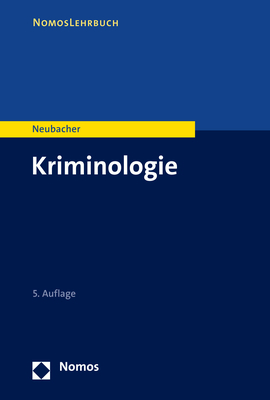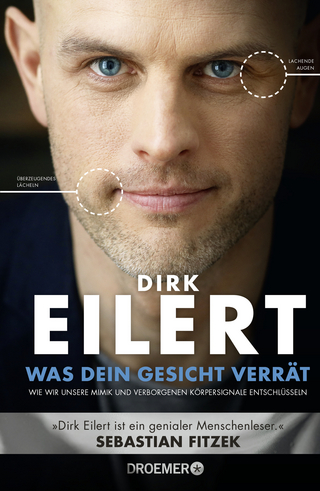Envisioning Criminology
Springer International Publishing (Verlag)
978-3-319-15867-9 (ISBN)
Most books and articles about research in criminology and criminal justice focus on how the research was carried out: the data that were used, the methods that were applied, the results that were achieved. While these are all important, they do not present a complete picture. Envisioning Criminology: Researchers on Research as a Process of Discovery aims to fill that gap by providing nuance--the "back story" of why researchers selected particular problems, how they approached those problems, and how their background, training, and experience affected the approaches they took.
As the contributions in this book demonstrate, research is not a cut-and-dried process, as all too many methods books imply, but a living, breathing-and in some ways quirky-process that is influenced by non-"scientific" factors. The path taken by a researcher is important, and an appreciation of his or her background, experience, knowledge-and the setbacks and triumphs of performing the research-provides a much more complete picture of how research is done.
The twenty-eight chapters in this book describe the back stories of their authors, which serve to enlighten readers about the interplay between the personal and the methodological. While primarily aimed as a textbook, this work will also be of interest to researchers in Criminology and Criminal Justice, and related Social and Behavioral Science fields as an account of how seminal researchers in the field developed their key contributions.
Michael D. Maltz is Professor Emeritus of Criminal Justice and of Information and Decision Sciences at the University of Illinois at Chicago. He is also Senior Research Scientist at the Ohio State University's Criminal Justice Research Center and Adjunct Professor of Sociology at OSU. He is the author of Recidivism (1984), which won awards in both criminology and operations research, and coauthor of Mapping Crime in Its Community Setting (1990), and was Editor of the Journal of Quantitative Criminology from 1996-2000. From 1995-2000 he was a Visiting Fellow at the Bureau of Justice Statistics (BJS), working on the development of graphical and geographical methods of analyzing data. For the past few years he has focused his attention on two areas: assessing and improving the quality of crime data, and improving the methods used to analyze criminal justice data. He is currently analyzing missing data in the FBI's Uniform Crime Reports and developing imputation methods to improve their accuracy. Maltz received his undergraduate degree from Rensselaer Polytechnic Institute and his Ph.D. in from Stanford University, both in electrical engineering. Stephen K. Rice is Associate Professor of Criminal Justice at Seattle University. He studies cooperation and defiance in individuals' interactions with the justice system (procedural justice, restorative justice; perceptions of racial profiling; police legitimacy; radicalization; final statements of the condemned); sentinel events; social media and criminal justice; data visualization; evidence-based law enforcement. He is co-editor of Race, Ethnicity and Policing (NYU Press, 2010) and Envisioning Criminology (Springer, 2015) and author of articles on topics to include guardian policing (Harvard Executive Session on Policing and Public Safety), radicalization, the variability of anger cross-culturally, and profiling of African Americans, Latinos, and Muslim Americans. His publications have appeared in outlets to include Criminology, Justice Quarterly, Deviant Behavior, and the Journal of Quantitative Criminology. He received his master's degree from Florida State University and his Ph.D. from the University of Florida.
Foreword Alfred Blumstein.- Chapter 1: Introduction Michael D. Maltz and Stephen K. Rice.- Section 1:Voices from the Street.- Chapter 2: A Conversation with Street Daddy: Pulling Back the Curtain on Twenty Years of Ethnography Scott H. Decker and Dietrich Lester Smith.- Chapter 3: Warping Time and Space: What It Really Takes too do Action Research in Crime Control David Kennedy.- Chapter 4: Observations on the Making of a Police Officer Peter Moskos.- Chapter 5: Cure Violence-Treating Violent Behavior as a Contagious Disease Gary Slutkin, Charles Ransford and R. Brent Decker.- Chapter 6: Why Criminals Tell Us the Truth Sudhir Venkatesh.- Section 2: Generating New Data.- Chapter 7: Gender & Sexuality as Methodological Confounds in the Study of Transgender Prisoners Valerie Jenness.- Chapter 8: Come Along and Ride on a Fantastic Voyage': My Journey through Rap Music Lyrics Charis E. Kubrin.- Chapter 9: Getting Emotional Stephen K. Rice.- Chapter 10: The Making of the Chicago Project Robert J. Sampson.- Chapter 11: Surveying Police Officers Wesley G. Skogan.- Section 3: Mining Records.- Chapter 12: Criminology, Terrorism and Serendipity Gary LaFree.- Chapter 13: Playing in the Sandbox: A Methodological Conversation Nicole Rafter and Amy Farrell.- Chapter 14: Getting Things Wrong Really Does Help, as Long as You Keep Trying to Get Things Right: Developing Theories about Why Homicide Rates Rise and Fall Randolph Roth.- Chapter 15: Twists, Turns and Tears on the Path to the Cycle of Violence Cathy Spatz Widom.- Section 4: Analyses of Existing Data.- Chapter 16: Research Adventures with 'Kinda Big' Data: Using NIBRS to Study Crime Lynn A. Addington.- Chapter 17: Elusive Facts about Gun Violence: Where Good Surveys Go Bad Philip J. Cook and Jens Ludwig.- Chapter 18: SolvingCriminological Puzzles Kenneth C. Land.- Chapter 19: Upon Becoming a Criminologist...And Spending 30 Years Thinking about Interesting Things Pamela K. Lattimore.- Chapter 20: The Devil is in the Details: Crime and Victimization Research with the National Crime Victimization Survey Janet L. Lauritsen.- Chapter 21: What's the Question? Ask That and You Will Follow the Path of Discovery Alex R. Piquero.- Chapter 22: Predicting Risk: Who Knew It Was Such a Risky Business? Susan Turner.- Section 5: Visual and Geographical Tools.- Chapter 23: Systems Modeling to Inform Drug Policy: A Personal Odyssey Jonathan P. Caulkins.- Chapter 24: Practitioner to Academic: An Interdisciplinary View from both Sides of the Looking Glass Elizabeth R. Groff.- Chapter 25: I Want You to Wear Something for Me': On the In Situ Measurement of Police Stress and the Potential Rewards of Channeling One's Inner Experimentalist Matthew J. Hickman.- Chapter 26: Sometimes Pictures Tell the Story Michael D. Maltz.- Chapter 27: Rounding Up Twice the Usual Number of Suspects D. Kim Rossmo.- Chapter 28: Small Worlds of Crime and Criminal Justice Interventions: Discovering Crime Hot Spots David Weisburd.
| Erscheint lt. Verlag | 26.6.2015 |
|---|---|
| Zusatzinfo | XXVI, 271 p. 30 illus., 16 illus. in color. |
| Verlagsort | Cham |
| Sprache | englisch |
| Maße | 178 x 254 mm |
| Themenwelt | Recht / Steuern ► Strafrecht ► Kriminologie |
| Sozialwissenschaften ► Soziologie ► Empirische Sozialforschung | |
| Schlagworte | crime mapping • Crime Space and Time • Data Visualization • Mixed Method Visualization • Qualitative Data Analysis • Visual Data Analysis |
| ISBN-10 | 3-319-15867-8 / 3319158678 |
| ISBN-13 | 978-3-319-15867-9 / 9783319158679 |
| Zustand | Neuware |
| Haben Sie eine Frage zum Produkt? |
aus dem Bereich




